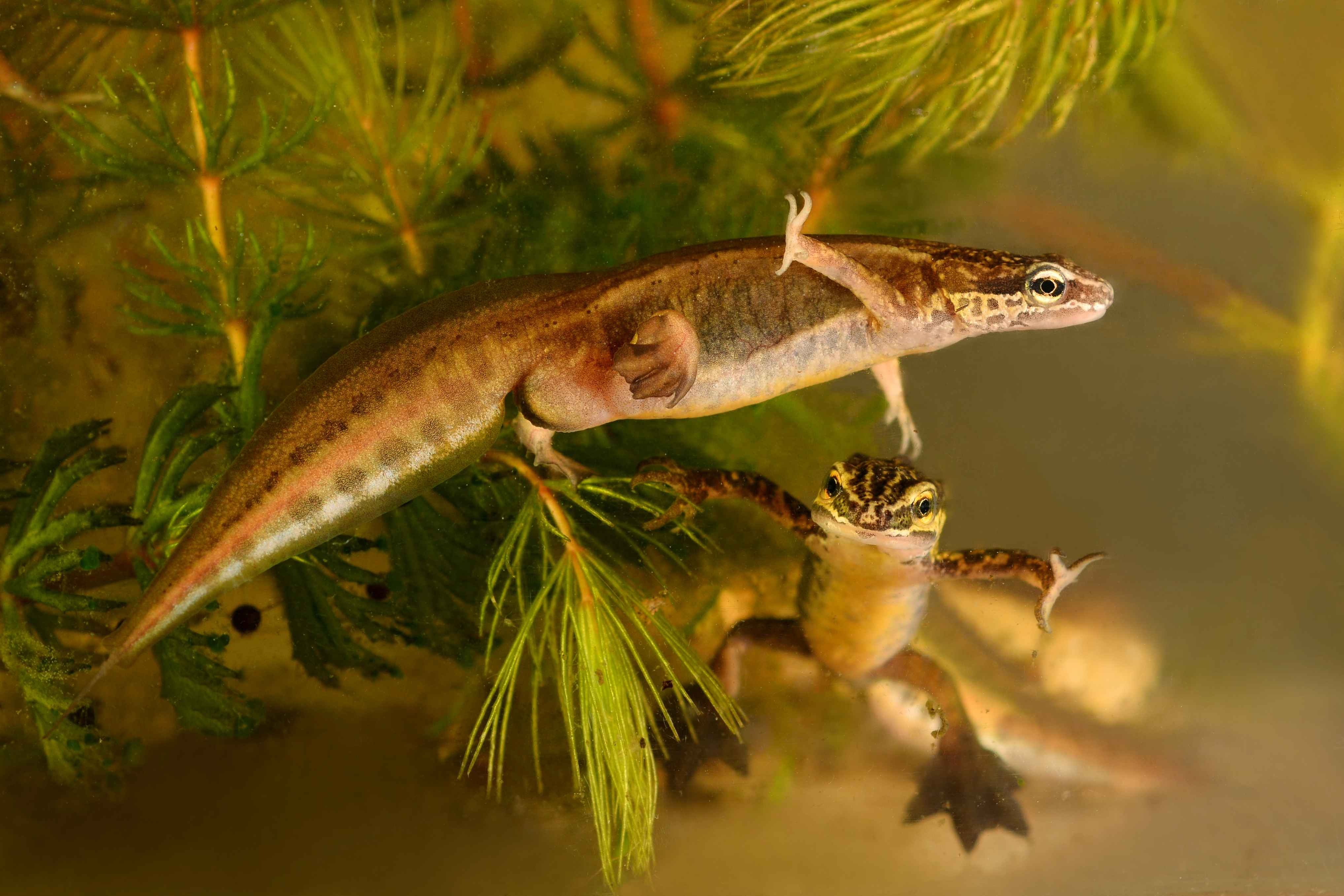Institut de Biologia Evolutiva - CSIC UPF
The palmate newt recolonised Europe from the Pyrenees region

An international team of scientists, led by the Natural Science Museum of Barcelona and the Institute of Evolutionary Biology (IBE), a joint institute of the Spanish National Research Council (CSIC) and Pompeu Fabra University (UPF), has reconstructed the evolutionary history of a nowadays widespread species, the palmate newt (Lissotriton helveticus). Published in the scientific journal Ecology and Evolution, the study uses high-resolution genomic data to identify the post-glacial dispersal routes and climate refuges that allowed the species to survive through the Quaternary glaciations.
A genetic journey from the north of the Iberian Peninsula
The results indicate that the palmate newt survived the glaciations in climate refuges located in the north of the Iberian Peninsula, from where it spread across Europe via two main routes: one through the Ebro basin, and the other over the Pyrenees, from Andorra in particular. The latter route has indeed been identified as the origin of the species’ recolonisation of Europe.
“This study has enabled us to understand how the glaciations shaped the current distribution of the palmate newt and how the Pyrenees acted as a key biogeographical bridge”, explains Bernat Burriel, a researcher at the Natural Science Museum of Barcelona and lead author of the study.
Rivers as evolutionary corridors
Climatic conditions in warm periods favoured the spread of the species, while during the glaciations it remained confined to the north of the Iberian Peninsula. The study highlights the fundamental role of rivers as migration routes and climate refuges. In particular, the Garonne River was key to its northward dispersal during interglacial periods. And the Ebro Delta population has been confirmed as a relict genetic line, with important implications for its conservation.
Catalan participation
The research team comprised Bernat Burriel, a researcher at the Natural Science Museum of Barcelona, as well as several researchers from the Institute of Evolutionary Biology (IBE: CSIC-UPF), the Calafell Centre for Environmental Research and Education (CREAC-GRENP-Calafell Town Council), and various other Spanish and European institutions. The study was funded by the “la Caixa” Foundation, the Barcelona Zoo Foundation, and the Generalitat de Catalunya’s Joan Oró programme, among others.
Implications for conservation
This work provides key tools for the management and conservation of endangered species, especially in the context of climate change. The identification of historical refuges and dispersal routes can be helpful in protecting vulnerable populations and planning ecological restoration. “Identifying dispersal routes and climate refuges gives us valuable tools to protect species, such as the palmate newt, in a context of global change”, says Bernat Burriel, researcher at the Natural Science Museum of Barcelona.
Reference article:
Burriel-Carranza, B., J. López-Caro, A. Jordà, et al. 2025. “Phylogeographic and Genomic Insights Unveil the Evolutionary History and Post-Glacial Recolonization Routes of the Palmate Newt (Lissotriton helveticus) into Europe”. Ecology and Evolution 15, no. 9: e71994. https://doi.org/10.1002/ece3.71994
